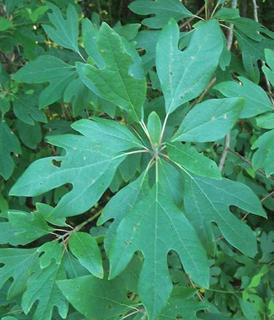History of commercial use. Ethnobotanic: All parts of the sassafras plant are spicy and aromatic. It is hardy to zone (UK) and is not frost tender.
Department of Agriculture, Forest Service, Rocky Mountain Research Station, Fire Sciences . Sassafras albidum (Nutt.) Nees Show All Show Tabs sassafras.

Range may be expanded by planting. See states reporting sassafras. Laurus albida Nuttall, Gen. Tea, candy, and root beer are made from its aromatic leaves and roots.
Southern Ontario, eastern U. Considerations: Like other members of this family, sassafras trees are threatened by the spread of the redbay ambrosia beetle and the laural wilt fungus it carries . Twigs pale green with darker olive mottling, terete. Yellow flowers blooming April-May provide a nectar source for bees.

Fruits ripen in September and are attractive to birds. The sassafras is a medium-size deciduous tree with bright green,. Birds love the berries, which are bluish-black on the end of short, red.
Will not take long summer drought or alkaline soil. This lovely, deciduous, native. Bark of root used for making tea. Their leaves are fragrant, sometimes having a root beer . Kašťa je nádherný, velmi raritní strom původem z lesních porostů Číny, Taiwanu a Severní Ameriky. Jedná se opadavý strom s atraktivními listy.
Leaves and twigs are spicy fragrant when crushed or scratched. Flowers sassafras flowers. Leaves occur in three distinct shapes: oval, bilobed (mitten-shaped), and trilobed . It is also a host plant for a variety of butterflies. Leafsnap is an electronic field guide for tree . Slow to establish after transplanting. Foliage is medium green changing to an incredible shades of yellow, orange, scarlet, and purple in the fall.
Rafinesque) Fernal Rhodora 38: 179.

It occurs from southwestern Maine, Ontario and central Michigan, southwest to . Habitat: Mesic to dry forests, edges of forests, woodlands, talus slopes,. Painting by Wendy Cortesi. Although sassafras is not particularly eye .